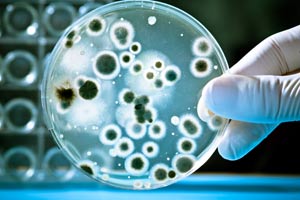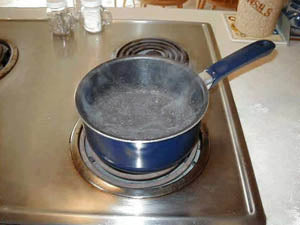While a skilled outdoorsman can utilize as many of nature’s resources as his imagination and ingenuity permits, drinking outdoor water supplies pose a serious health hazard. No matter how clean and clear a brook or stream may seem, it has the potential to be teeming with microorganisms. In addition, many water supplies may be contaminated with non-biological contaminants such as chemicals and heavy metals. These types of pollutants enter into the ground and over time filter down into the local water table. Purification is necessary to ensure that water is potable and doesn’t cause any of a variety of illnesses associated with drinking contaminated water.

Types of water
contamination
There are many different potential water
pollutants, but two broad categories are
chemical and biological contaminants.
Chemical contaminants include the runoff
from fertilizers and pesticides, heavy
metals such as mercury and lead,
detergents, solvents, fuels, ammonia and
acid, among others. Many of these
substances possess varying levels of
toxicity; traditional methods of water
purification will not properly treat
water contaminated with them.
Specialized water treatment plants are
usually necessary to purify the
water.
Biological contaminants include any
microscopic organism that causes a
variety of infections and illnesses.
They fall into three types:
- Protozoa –Single cell organisms such as giardia and C. parvum that are among the largest in size of potential contaminants.
- Bacteria – Single cell organisms such as salmonella, E. coli, and legionella.
- Viruses – Non-cellular organisms such as Hepatitis A and poliovirus.
Biological contaminants can cause a variety of illnesses. Since contaminated water enters into the digestive system first, most of these illnesses exhibit symptoms like diarrhea, abdominal pain, bloating, gas, nausea, and flatulence. They also can cause fever, fatigue, muscle aches, and other flu-like symptoms.

Water purification
methods
There are a variety of ways to treat
contaminated water that do not involve
specialized water treatment plants.
These include boiling, filtration,
chemical treatments, and solar methods.
Boiling water raises the temperature of the water to 212 degrees Fahrenheit. Since almost all microorganisms will die at temperatures slightly below 200 degrees (with the exception of botulism spores), bringing water to a rolling boil for a few minutes will eliminate them. In the case of botulism, the toxin that the bacteria produces is destroyed at the boiling point of water, but the botulism spore itself is not; it’s free to keep producing the toxin later on. A temperature of 250 degrees Fahrenheit is necessary to destroy botulism spores. At sea level or above, this isn’t possible without the use of a pressure cooker.
Filtration involves using porous
materials that allow water molecules to
pass through but stop and collect larger
particles and microorganisms. One very
common method of filtration is using
activated carbon. This is a processed
form of charcoal that is very porous and
has lots of surface area. It utilizes a
chemical property called adsorption (not
to be confused with absorption) in which
molecules stick to the surface of the
carbon. Activated carbon is found in
most commercial water filter/pitchers.
Another method of filtration is membrane
filtration, in which a very thin sheet
of material contains very tiny pores.
The pores are small enough that water
can travel through it, but not large
enough to allow microorganisms or large
molecules to pass through. Membrane
filters are rated by the size of the
pores, which are measured in microns.
Chemical treatments involve mixing
certain chemicals uniformly into a
container of water and waiting for a
certain period of time as the chemical
treats the water. The most common
chemicals used to treat water are iodine
and chlorine. The drawbacks to iodine
tablets are that they are light
sensitive (they must be kept in a dark
container), they have a limited
shelf-life (around 3 months), and some
people have an allergy to iodine.
Chlorine tablets are used similarly to
iodine tablets and are a viable
alternative for those with iodine
allergies. The drawback to chlorine
tablets is that they have an even
shorter shelf-life than iodine (3 days).
Chemical tablets must be used for a
minimum of 30 minutes, but the colder
and cloudier the water, the longer the
necessary treatment time.
Solar methods include solar stills and
solar water disinfection. In a solar
still, contaminated water sits in a
basin or trough that is heated by the
sun. A piece of glass or plastic is
fixed above the basin of water and
angled downwards towards an empty basin.
As the heat from the sun evaporates the
contaminated water, pollutants are left
behind in the original basin. Water
vapor collects on the glass or plastic
through condensation and because the
glass or plastic is angled, the water
drips slowly into the clean, empty
basin. In solar water disinfection
(SODIS), clear plastic PET bottles are
filled with water and placed in direct
sunlight for 3-6 hours. Microorganisms
are killed by the effects of UV
radiation that accompanies natural
sunlight.



